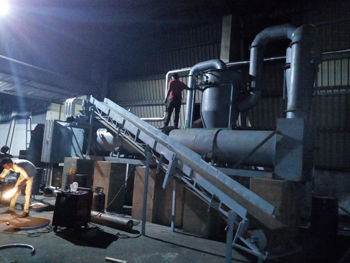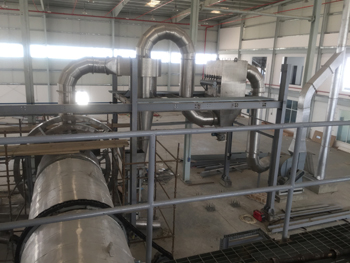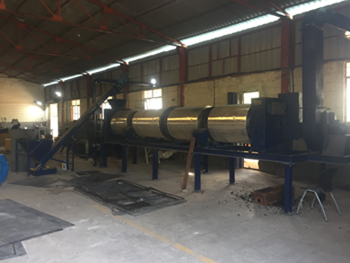Email: info@vdengineers.in
Call Us: +918048555500, +919840964441
Rotary Dryer
The rotary dryer is a type of industrial dryer employed to reduce or minimize the liquid moisture content of the material it is handling by bringing it into direct contact with a heated gas. The dryer is made up of a large, rotating cylindrical tube, usually supported by concrete columns or steel beams. The dryer slopes slightly so that the discharge end is lower than the material feed end in order to convey the material through the dryer under gravity. Material to be dried enters the dryer, and as the dryer rotates, the material is lifted up by a series of internal fins lining the inner wall of the dryer. When the material gets high enough to roll back off the fins, it falls back down to the bottom of the dryer, passing through the hot air stream as it falls. This air stream can either be moving toward the discharge end from the feed end (known as co-current flow), or toward the feed end from the discharge end (known as counter-current flow). Humid air carrying moisture, and in some cases dust, is transferred from the material being and removed in a cyclone, a cyclone / wet scrubber combination or bag filter. |
 |
|
Unique Features
There are two basic configurations of Direct Fired Dryers:
|

|
|
Co-Current Rotary Dryer wet material is introduced into the drum on the same end that the hot air enters the dryer. Conversely, dry material discharges on the same end of the dryer as the exhaust vapor. The co-current dryer offers two advantages:
Counter-Current Rotary Dryer With the counter-current or counter flow dryer, wet material is introduced into the drum on the opposite end that the hot air enters the dryer and dry material discharges on the opposite end of the dryer as the exhaust vapor. The counter-current dryer is usually considered for processes such as:
| 
|
|
Application
| 
|
© Copyright 2021. All Rights Reserved.
